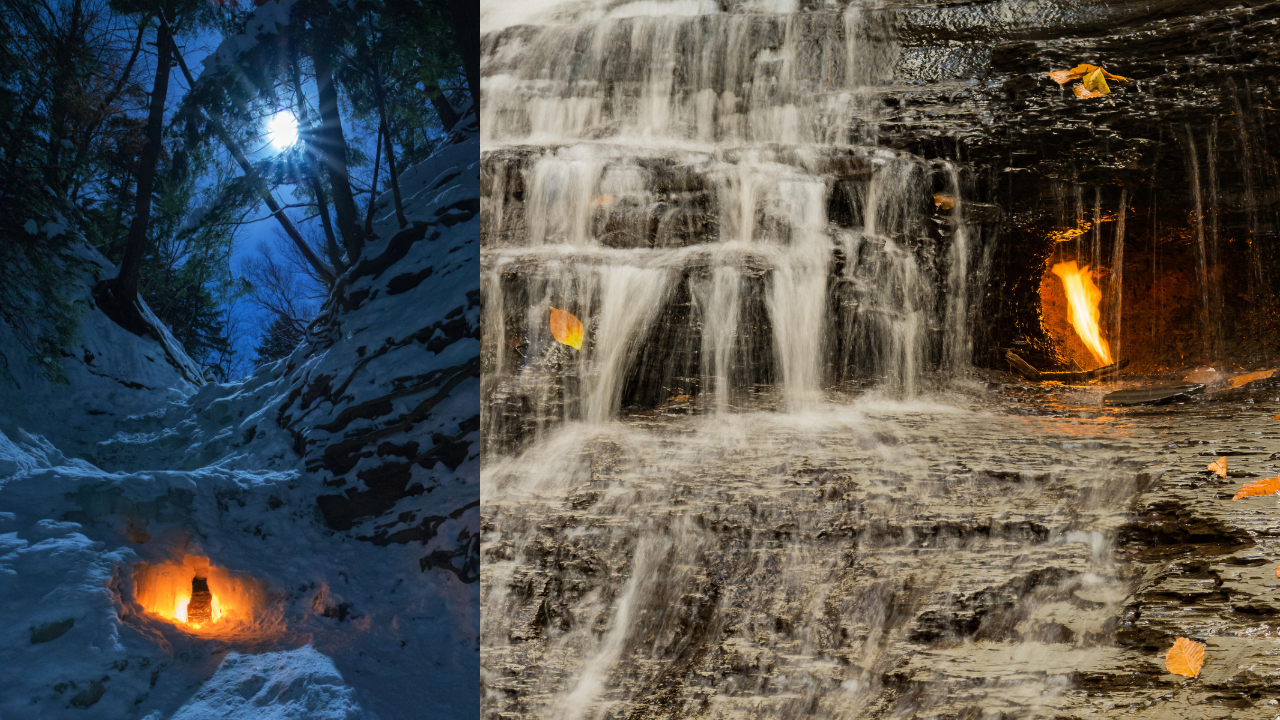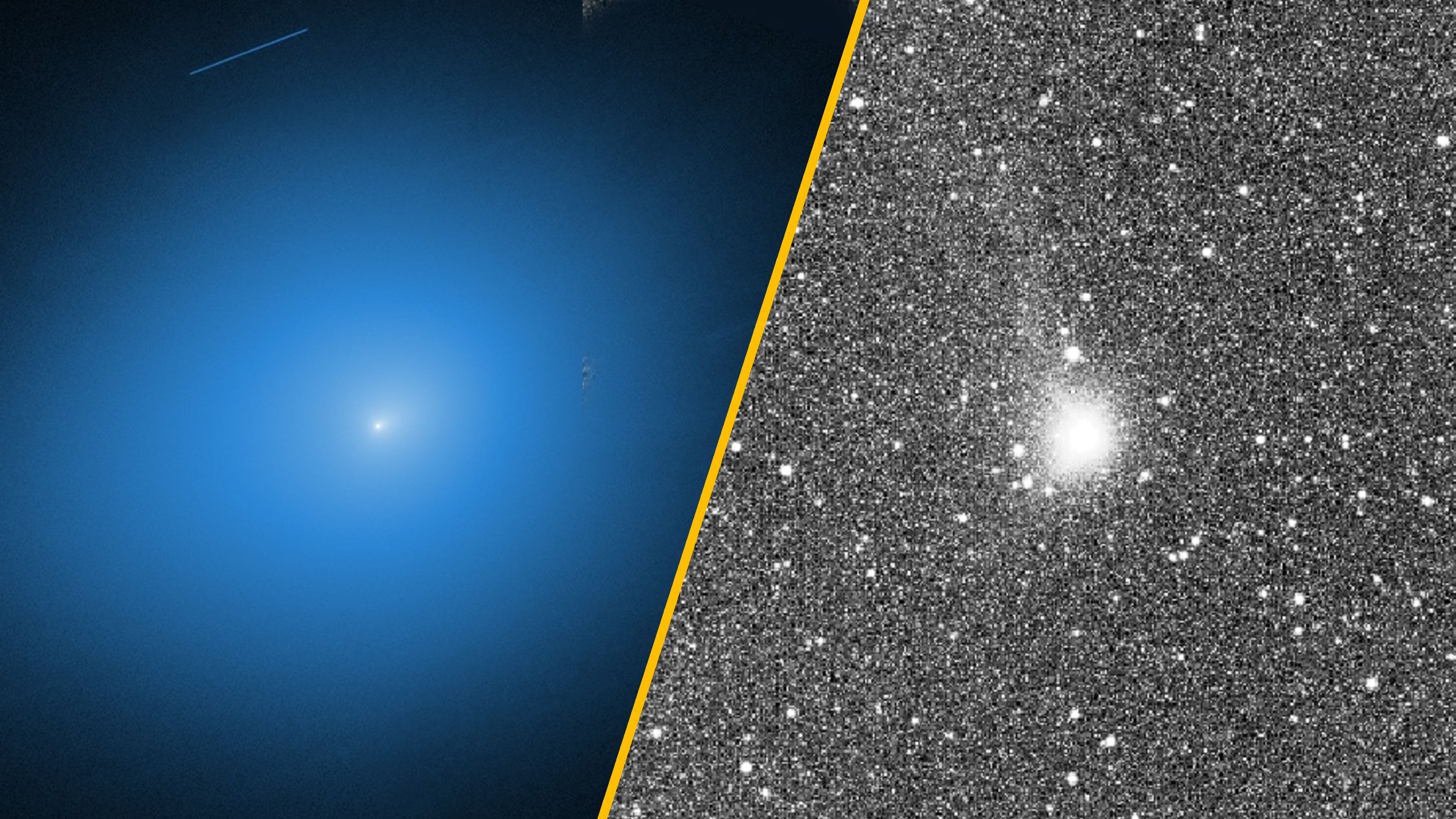Eternal Flame Falls: New York's mini waterfall that hides a grotto filled with undying fire
Eternal Flame Falls sits on a bed of shale rocks rich in organic matter. As this matter breaks down, it produces highly flammable natural gas that escapes through cracks in the ground.

Name: Chestnut Ridge Falls, or "Eternal Flame Falls"
Location: Chestnut Ridge Park, Erie County, New York
Coordinates: 42.70158, -78.75113
Why it's incredible: The falls house a natural gas seep that can burn uninterrupted.
Eternal Flame Falls is a waterfall in New York State that houses one of the world's few natural "eternal" flames.
The waterfall is about 30 feet (9 meters) tall and consists of two tiers; one at the top measuring 8 feet (2.5 m) high and the other at the base making up the remaining height. The cascade flows over an outcrop of shale, a type of sedimentary rock made of compacted clay, silt, mud and organic matter.
As its name suggests, Eternal Flame Falls features a fire that burns uninterrupted behind the waterfall. The small blaze grows up to 8 inches (20 centimeters) tall, protected from any spray and wind by the walls of a small grotto around it.
The air surrounding Eternal Flame Falls is filled with a smell like rotten eggs, according to the website NY Falls, which publishes guides to waterfalls in New York. That's because the cascade is surrounded by natural gas seeps that release hydrogen sulfide, methane and other gases into the atmosphere. And the biggest of these seeps is located directly beneath the eternal flame.
Gases like methane are highly flammable. Thanks to the shelter of the small grotto, the natural gas escaping from this seep can be ignited with a match or lighter and burn permanently. Other seeps around Eternal Flame Falls aren't protected in the same way, so lighting them would not produce a lasting fire. These seeps are invisible, unless they are located at the bottom of the stream and pools near the waterfall, in which case the gas can be seen bubbling up, according to NY Falls.
The natural gas at Eternal Flame Falls originates from decomposing organic matter in buried layers of shale. Specifically, the gas comes from a geological formation called the Hanover Shale that dates to the Devonian period (419.2 million to 358.9 million years ago). Organic matter breaking down in this 90-foot-thick (27.5 m) formation releases gases that accumulate underground. As the pressure builds, these gases escape via fissures in the rock and soil above, giving rise to seeps at the surface.
The best time to visit Eternal Flame Falls is in early spring, when the waterfall and eternal flame look the most impressive, according to NY Falls. The waterfall is highly dependent on meltwater and rainfall, so it usually dries up in the summer and fall. The flame, meanwhile, relies on relatively dry conditions. It burns stronger in the summer but looks better in the spring, because the waterfall diffuses the light like a lampshade, creating an otherworldly glow.
Get the world’s most fascinating discoveries delivered straight to your inbox.
Eternal Flame Falls is fed by the Shale Creek, which joins another waterway called Eighteenmile Creek about 2 miles (3 kilometers) away, according to NY Falls. The water then empties into Lake Erie.
Discover more incredible places, where we highlight the fantastic history and science behind some of the most dramatic landscapes on Earth.

Sascha is a U.K.-based staff writer at Live Science. She holds a bachelor’s degree in biology from the University of Southampton in England and a master’s degree in science communication from Imperial College London. Her work has appeared in The Guardian and the health website Zoe. Besides writing, she enjoys playing tennis, bread-making and browsing second-hand shops for hidden gems.
You must confirm your public display name before commenting
Please logout and then login again, you will then be prompted to enter your display name.


